产品概述(Product Details)
ClinMax™ Human IL-10 ELISA Kit is a ready-to-use immunoassay kit, specifically designed to quantitate natural and recombinant human IL-10 that is present in biological samples, such as human serum, plasma, and cell culture supernatants. Our ClinMax™ ELISA Kit provides several benefits:
- Standards to calibrate with NIBSC/WHO standards for comparable results.
- Fully validation in biologic samples for detection range, sensitivity, inter- and intra-plate CV, recovery, dilution linearity, specificity, and matrix effects to ensure reliable results according to ICH M10 guideline.
- High-quality antibody pairs and protein standards, along with rigorous quality control, to guarantee consistent results across different batches.
- Simplified and straightforward protocols and ready-to-use reagents to save assay time.
应用说明(Application)
The kit is developed for quantitative detection of natural and recombinant human IL-10 in serum, plasma and cell culture supernatants.
It is for research use only.
流程图(Workflow)
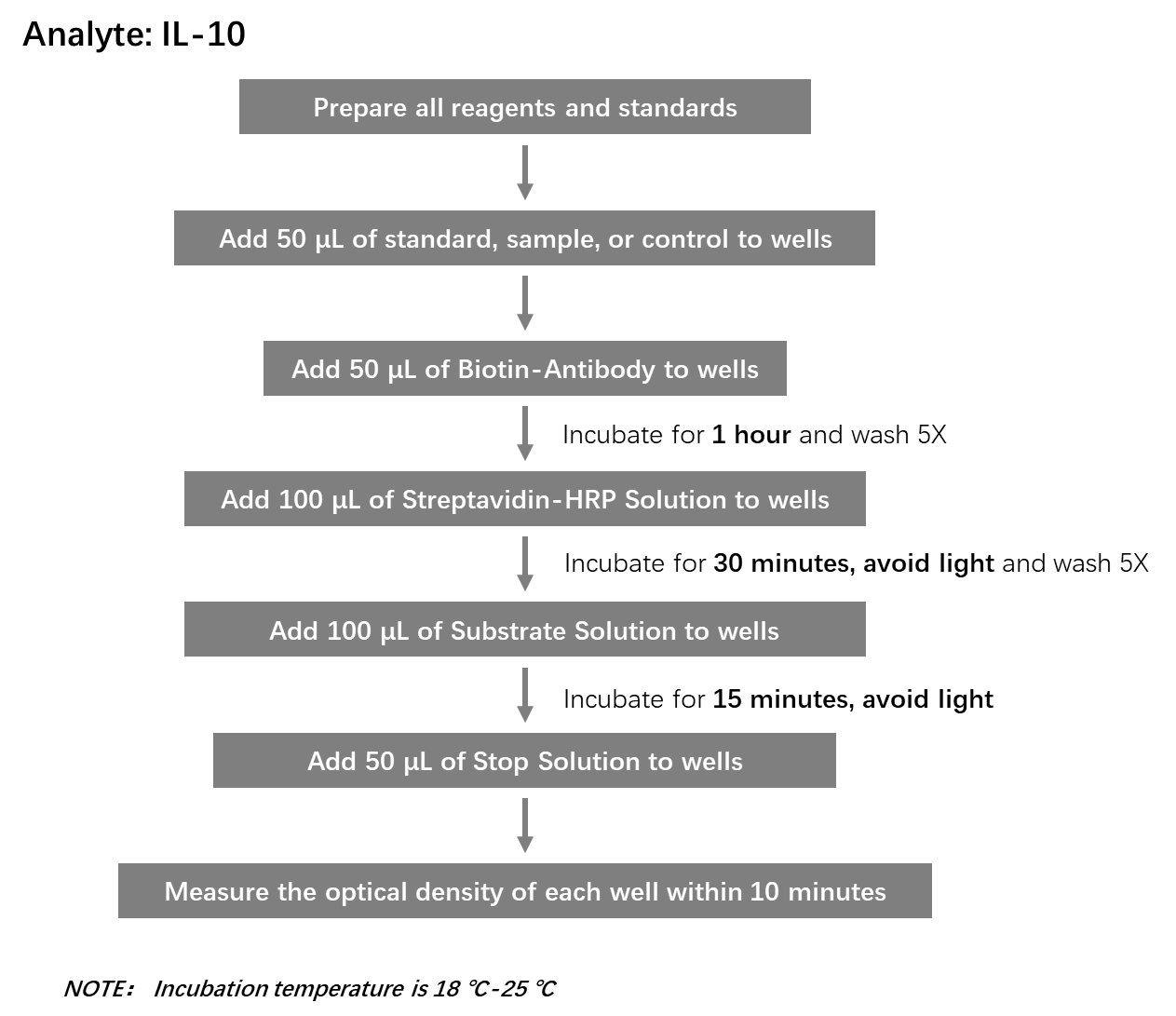
关键信息(Key Features)
| Assay Type | Sandwich-ELISA |
| Analyte | IL-10 |
| Format | 96-wells plate breakable into 12 x 8 wells strips |
| Reactivity | Human |
| Sensitivity | 2.0 pg/mL |
| Assay Time | 1.75 hr |
| Sample volume | 50 uL |
| Range | 4.12 pg/mL-1000 pg/mL |
| Sample Type | Cell Culture Supernatants, Plasma, Serum. |
| NIBSC Code | 93/722 |
Elevate your research experience with our Cytokine/Biomarker Detection Kits, where accuracy, reliability, and ease of use are converging to deliver exceptional results.
存储(Storage)
Unopened kit should be stored at 2℃-8℃ upon receiving. The opened kit should be stored per components table. The shelf life is 30 days from the date of opening.
质量管理控制体系(QMS)
典型数据-Typical Data Please refer to DS document for the assay protocol.

For each experiment, a standard curve needs to be set for each microplate, and the specific OD value may vary depending on different laboratories, testers, or equipment. The following example data is for reference only. The sample concentration was calculated based on the results of the standard curve. The minimum detectable concentration of IL-10 is less than 2.0 pg/mL.
验证(Validation)
样本值(Sample Values)
Serum Sample – 240 samples from healthy volunteers were tested for the presence of human IL-10 concentration in the assay. 238 samples were detectable. No medical histories were available for the donors used in this study.
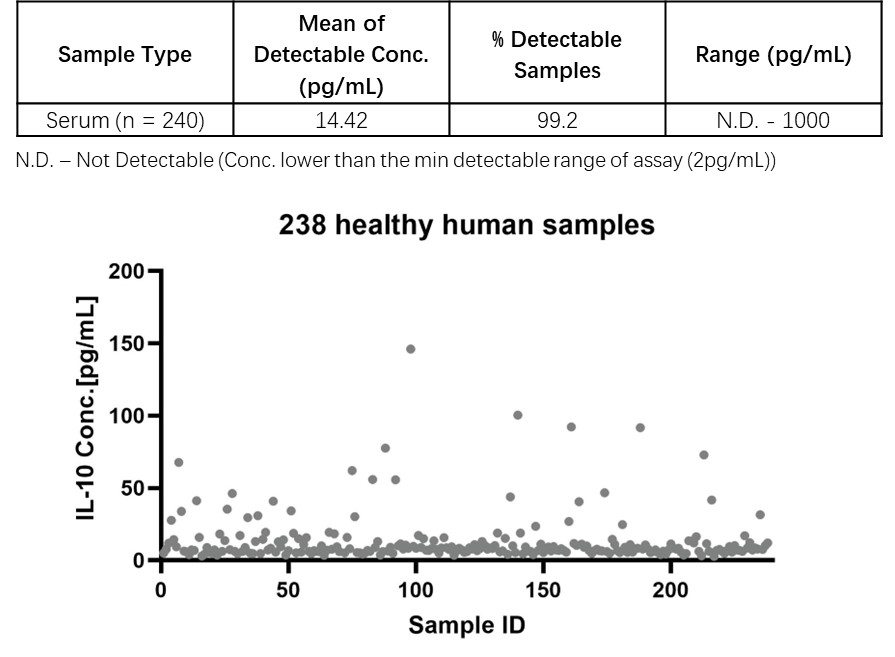
Cell Culture Supernatant – Human peripheral blood mononuclear cells (PBMCs) were cultured and stimulated with target cells at E:T ratios of 1:10 and 1:5, and then detect the secretion of IL-10 under stimulation with different concentrations of Blinatumomab.
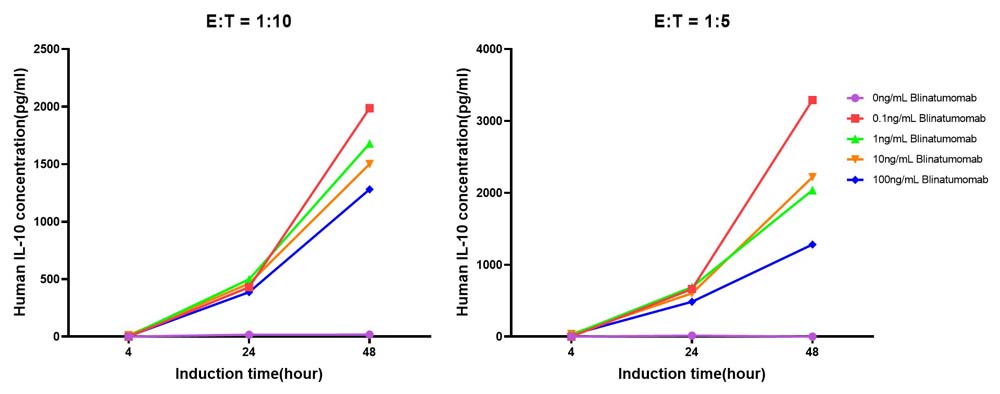
基质效应(Matrix Effect)
6 types of materials were tested to observe if there were matrix effect (interference). If the concentration of hemoglobin (simulated hemolysis) is less than 3500 mg/dL, the concen-tration of triglyceride (simulated lipid blood) is less than 2.0 g/L, the concentration of bili-rubin (simulated jaundice) is less than 20 mg/dL, Heparin concentration is less than 40 U/mL, EDTA concentration is less than 4 mg/mL, and Sodium Citrate Plasma concentration is less than 40 mg/mL, testing results will not be affected.
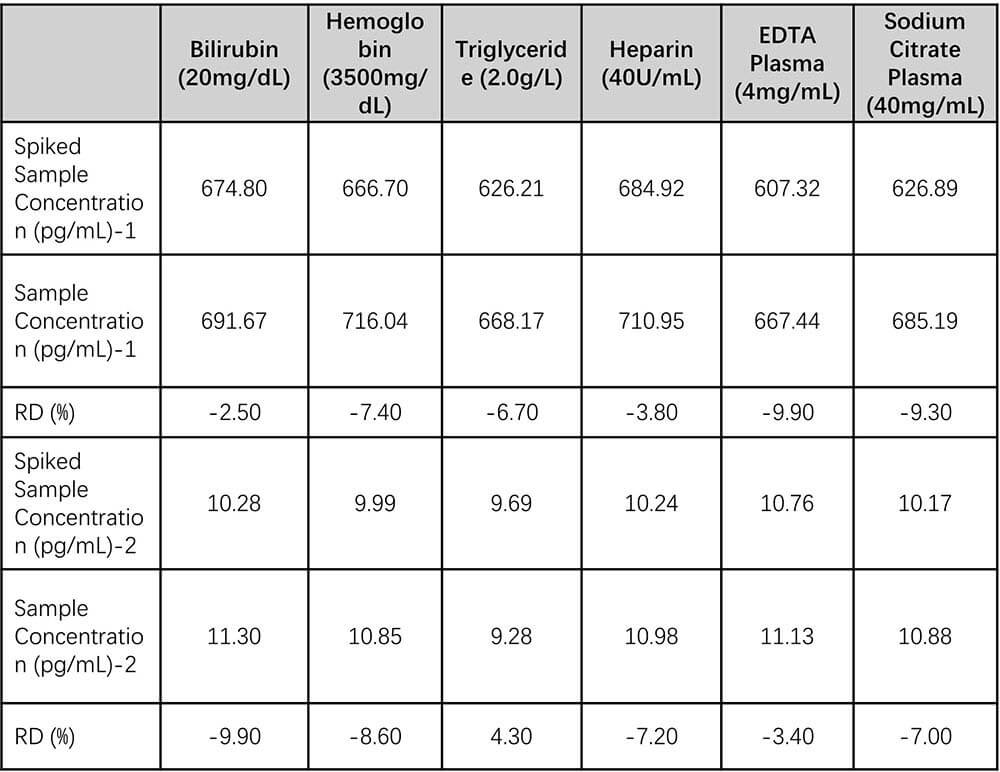
稀释线性(Dilution Linearity)
High concentrations of human IL-10 serum samples were diluted with 1:2, 1:4, and 1:8 ratios for gradient dilution to evaluate the linearity of the assay. In the serum samples, the average detection rate of IL-10 was 100.67%.
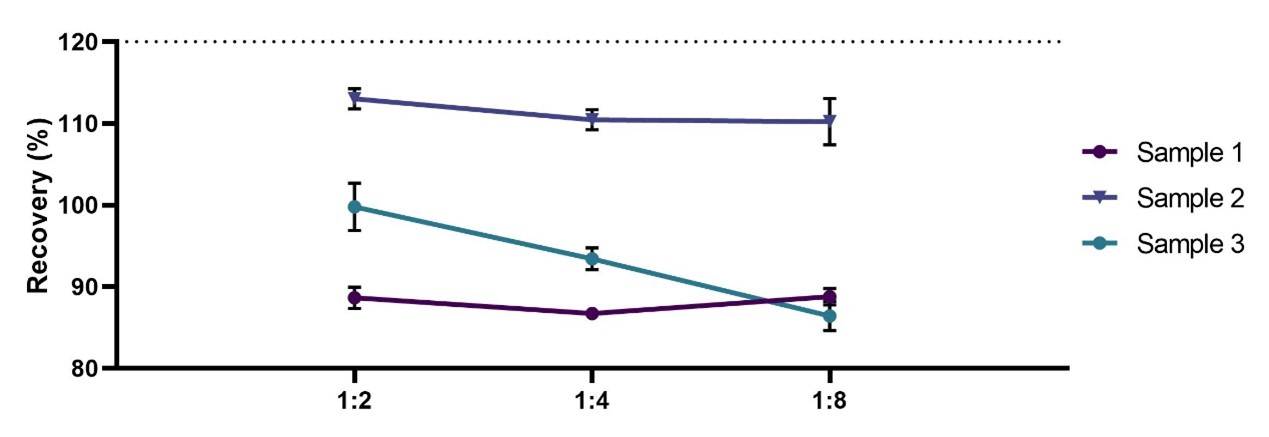
批内差异(Intra-Assay Statistics)
10 replicates of each of 3 samples containing different IL-10 concentrations were tested in one assay. Acceptable criteria: CV<10%.

批间差异(Inter-Assay Statistics)
3 samples containing different concentrations of IL-10 were tested in the independent as-says. Acceptable criteria: CV<15%.

回收率(Recovery)
IL-10 was spiked into 5 human serum samples, and then analyzed. The average recovery of IL-10 for serum samples is 100.67%.
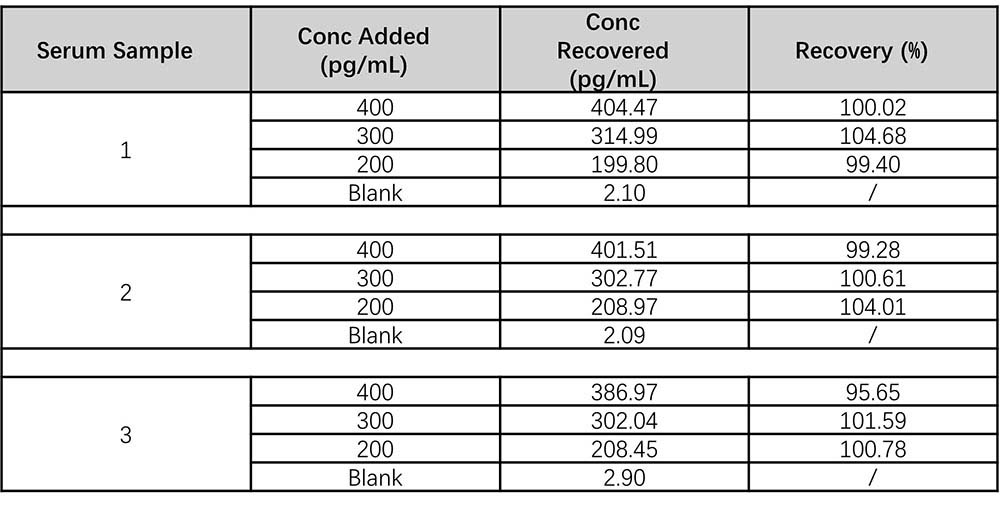
组分(Materials Provided)
| ID | Components | Size |
| CRB005-C01 | Pre-coated Anti-IL-10 Antibody Microplate | 1 plate |
| CRB005-C02 | Human IL-10 Standard | 60 μg×2 |
| CRB005-C03 | Biotin-Anti-IL-10 Antibody Con. Solution | 100 μL |
| CRB005-C04 | Biotin-Antibody Dilution Buffer | 8 mL |
| CRB005-C05 | Streptavidin-HRP Con. Solution | 500 μL |
| CRB005-C06 | Streptavidin-HRP Dilution Buffer | 15 mL |
| CRB005-C07 | 20× Washing Buffer | 50 mL |
| CRB005-C08 | 1× Dilution Buffer | 15 mL×2 |
| CRB005-C09 | Substrate Solution | 12 mL |
| CRB005-C10 | Stop Solution | 6 mL |























































 膜杰作
膜杰作 Star Staining
Star Staining








 +添加评论
+添加评论








